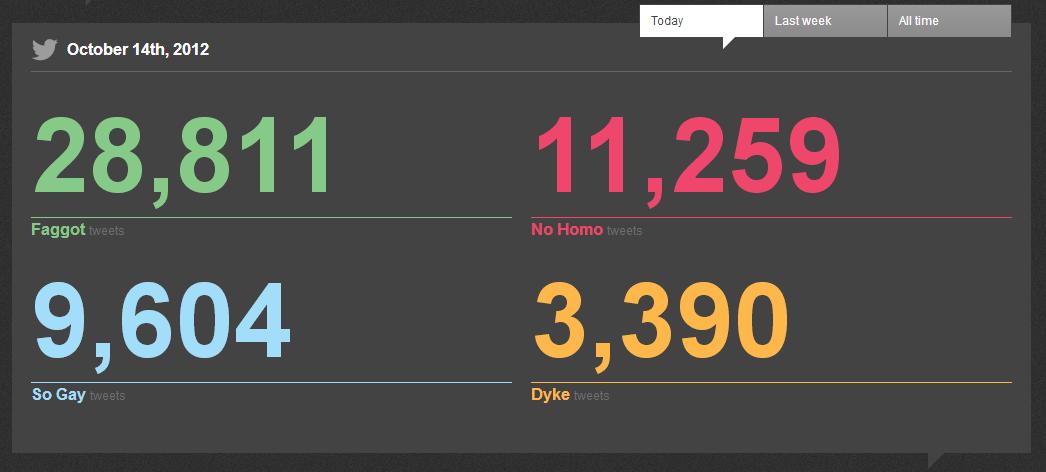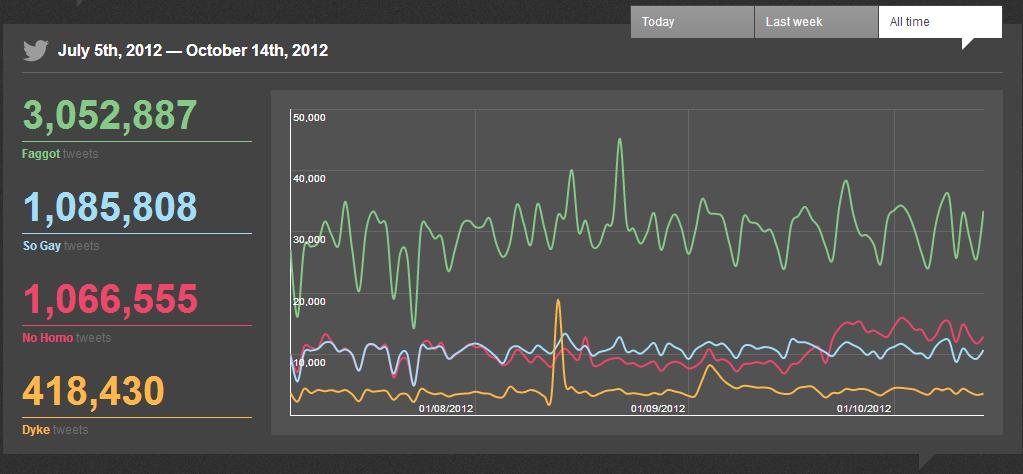On July 5th 2012, a website was launched by the University of Alberta titled: No Homophobes. As the site states:
“It is designed as a social mirror to show the prevalence of casual homophobia in our society. Words and phrases like “faggot,” “dyke,” “no homo,” and “so gay” are used casually in everyday language, despite promoting the continued alienation, isolation and — in some tragic cases — suicide of sexual and gender minority (LGBTQ) youth.”
The website searches Twitter for 4 words: Faggot, No Homo, So Gay and Dyke. With these Tweets, the site simply compiles a count of the number of times each word is used that day. Below, it posts every single Tweet from people around the world that contains one or more of these 4 words.
What interests me about this site is its ability to show these Tweets in real time. When individuals see the amount of Tweets using homophobic language the instant they happen, the impact is far greater than a simple number that happened yesterday. This impact is heightened when the Tweets are occurring so frequently that they are unable to be read before they have left the screen. In addition to daily statistics, a count is kept of how many Tweets containing each of these 4 words have been posted in the last week and since the site began 3 months ago.
Also of interest is the simplicity of the site. The design and interface is easy to read and understand within seconds of clicking the link. The clever use of colour and the lack of words allows the user to observe the facts and interpret them as they please. Searching Twitter for 4 words and plotting their use over time is such a simple concept yet so powerful. Like most people, I was absolutely shocked at the volume of homophobic remarks on such a global social platform. A site like this compiles all of these Tweets and displays them in a meaningful way that sparks a multitude of emotion. I think the success of this site lies in the volume of Tweets. When individuals see a single homophobic remark on their Twitter feed, it is unlikely to spark much emotion. However, when placed side by side and tallied throughout a day reaching numbers of over 60,000, the affect of these Tweets multiplies and demands action. This site provokes thought and demands change.






